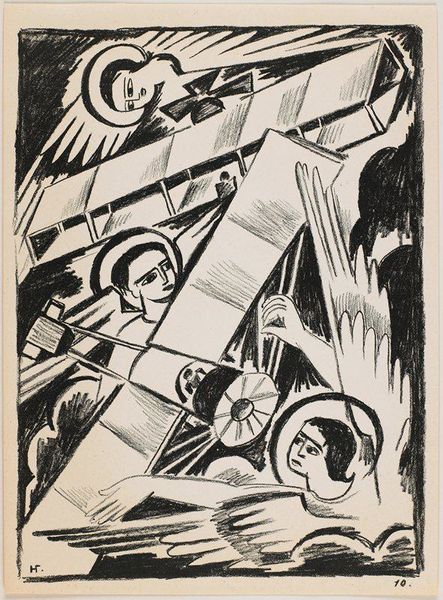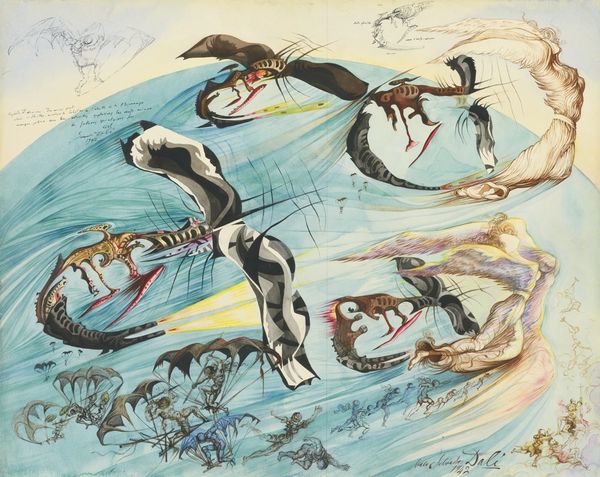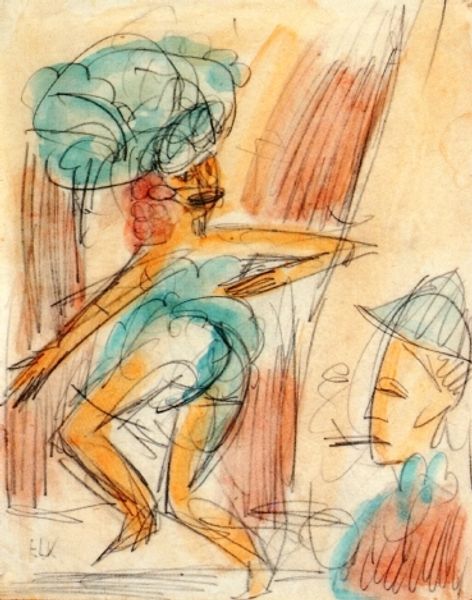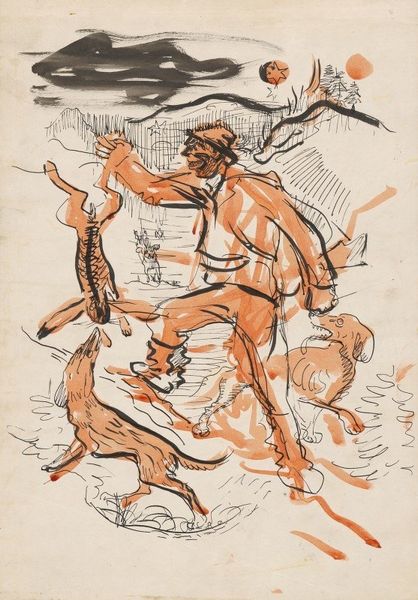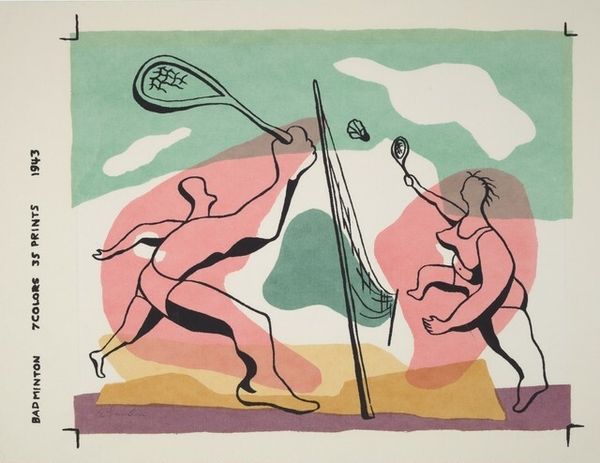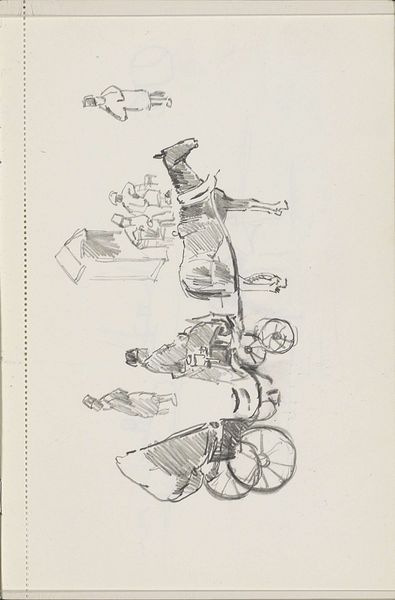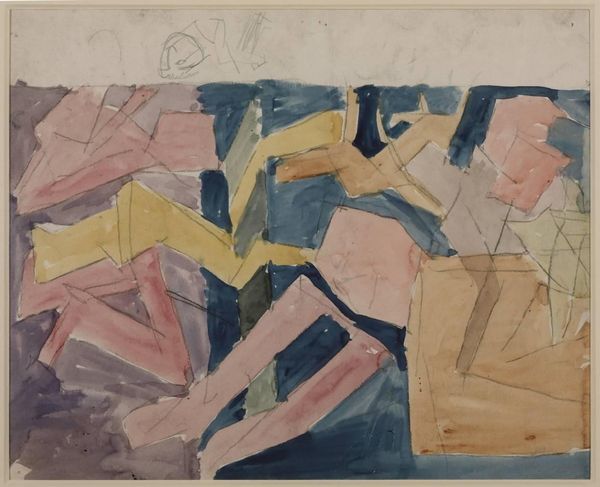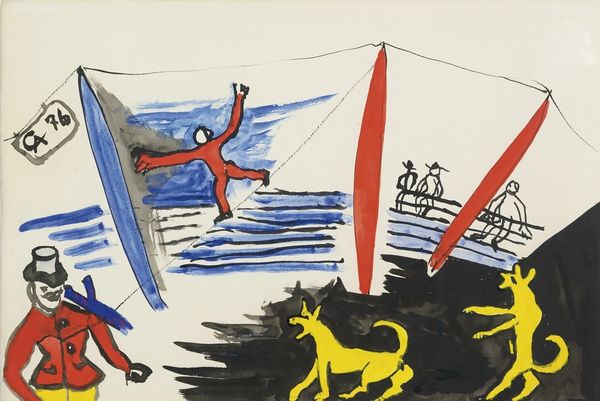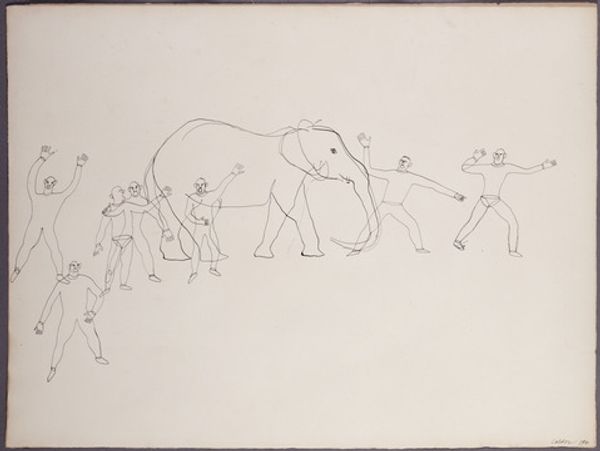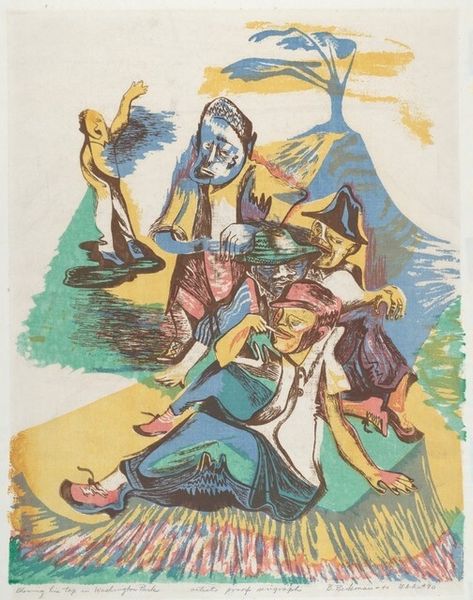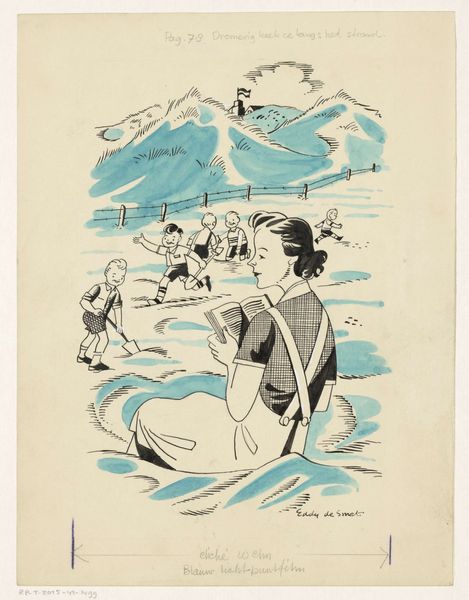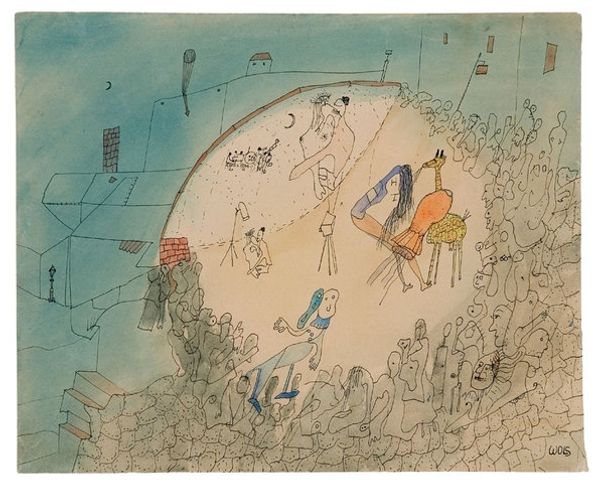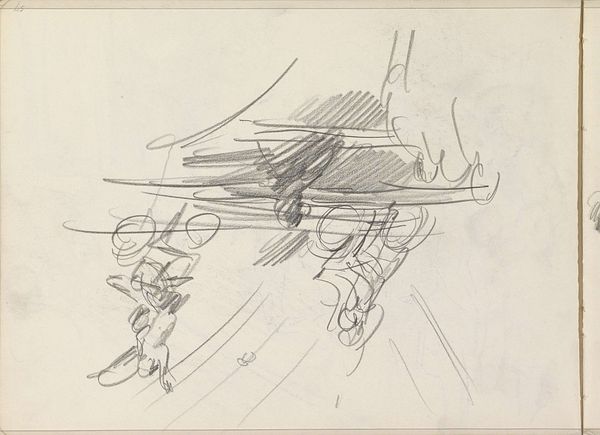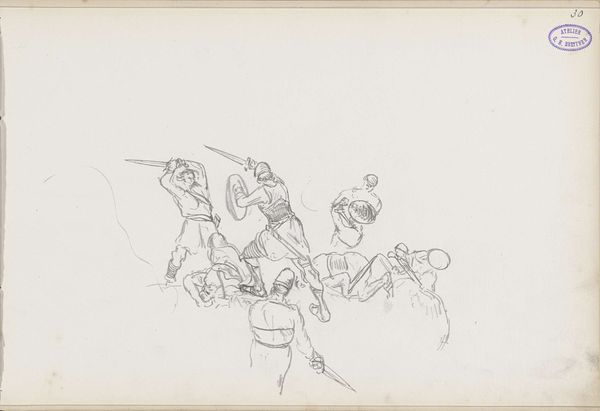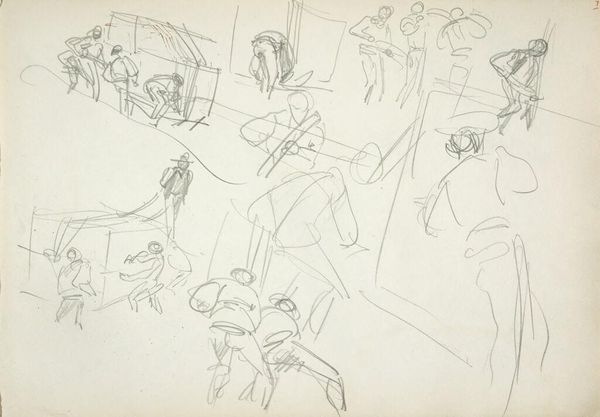
Copyright: Public Domain: Artvee
Editor: So, this watercolor on paper is "Hockeyspieler," or "Hockey Players," painted by Ernst Ludwig Kirchner in 1934. There's a frenetic energy to the lines, a sense of motion captured in these washes of color, but I’m not sure where to begin analyzing it. What do you see as the key compositional elements here? Curator: Focus, if you will, on the linear elements. Note how Kirchner employs a series of curving, parallel lines to imply both the ice rink and the dynamism of the players' movements. It is the line – its quality and directionality – which articulates the spatial arrangement, creating depth where one might expect flatness. Editor: I see what you mean. The lines almost become a cage around the players, suggesting confinement even within the implied freedom of the game. Is that intentional? Curator: Indeed. Consider also the relationship between line and color. The watercolor washes serve not as descriptive tools but rather as emotive signifiers. The stark blues and reds against the pale ground evoke a sense of unease, a discord that subverts the apparent playfulness of the subject matter. Editor: So the composition itself, with its discordant colors and almost imprisoning lines, communicates a tension beneath the surface of this game? It seems to be more than just a genre scene. Curator: Precisely. And reflect, furthermore, on the visible grid of the paper itself. Kirchner doesn't attempt to hide or transcend it. He integrates it, thereby flattening the pictorial space and drawing attention to the materiality of the artwork. The support becomes as vital as the image itself. Editor: That makes so much sense. It’s almost as if the grid underscores that we are seeing a representation, an artificial construct, rather than a direct record of reality. I never would have considered the paper itself part of the message! Curator: The painting is, then, a commentary not only on movement and confinement, but also on the very act of representation. These visual cues provide insights into the nature of perception. Editor: Thank you for this insight. Now I see "Hockeyspieler" as a work examining artistic construction and visual encoding, rather than simply a rendering of figures on a playing field. Curator: Yes, quite so. Approaching art from this vantage offers new interpretations of its function and meaning, far beyond superficial narrative.
Comments
No comments
Be the first to comment and join the conversation on the ultimate creative platform.
